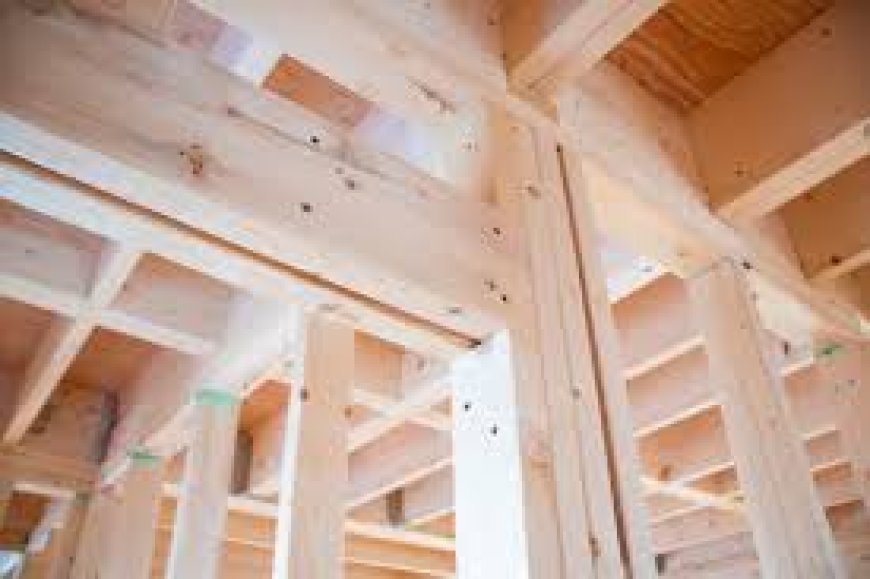How Timber Wall Frames Enhance Home Durability

In the ever-evolving world of construction, homeowners and builders alike are constantly seeking materials that strike the perfect balance between sustainability, affordability, and structural integrity. Among the various building options available, timber wall frames have stood the test of time — not just for their aesthetic appeal, but for their remarkable contribution to home durability. If you're planning a new build or renovation, understanding how timber wall frames enhance home durability can help you make informed decisions about your project.
The Strength Behind the Structure
Timber, when properly sourced and treated, is an incredibly strong and resilient building material. One of the most significant advantages of using timber wall frames lies in their load-bearing capacity. High-quality timber species like pine and hardwoods are capable of withstanding significant pressure and stress, making them ideal for forming the skeleton of a home.
Modern timber framing techniques have further improved durability. Engineered timber products, such as laminated veneer lumber (LVL) and cross-laminated timber (CLT), offer enhanced strength and dimensional stability, ensuring that the wall frames resist warping, twisting, and bowing over time. This means fewer structural issues and costly repairs down the line.
Flexibility Under Pressure
Unlike rigid materials such as concrete and steel, timber has a natural flexibility. This characteristic allows timber wall frames to absorb and distribute stress more evenly during extreme conditions like high winds, earthquakes, or ground movement. In seismic zones, timber-framed buildings have demonstrated better performance due to their ability to flex without cracking or collapsing.
This flexibility also contributes to the longevity of the building. While rigid materials may crack under pressure, timber frames bend and adapt, reducing the likelihood of structural failure and enhancing the overall durability of the home.
Resistance Through Treatment
Concerns around timber being susceptible to pests, moisture, and fire are common — but modern treatment methods have largely mitigated these risks. Today’s timber wall frames are often pressure-treated to resist termites, fungi, and decay. Builders also apply protective coatings and sealants that repel water and prevent moisture from seeping in and weakening the frame.
Additionally, many timber products used in framing are rated for fire resistance. While it may seem counterintuitive, large timber components actually char on the outside when exposed to fire, forming a protective layer that insulates the inner structure. This slows the spread of fire and provides critical time for occupants to evacuate and emergency services to respond.
Lightweight Yet Durable
Another aspect of timber’s durability comes from its lightweight nature. Timber wall frames are much lighter than steel or concrete, which reduces the overall load on the foundation. This can be particularly beneficial in areas with soft soil or where minimizing ground disturbance is important.
A lighter structure puts less stress on other components of the building over time. It also makes construction faster and easier, which reduces the chance of on-site damage during installation.
Environmentally Friendly Durability
Durability isn’t just about withstanding the elements — it’s also about maintaining performance over a long lifespan without negatively impacting the environment. Timber is a renewable resource, and when responsibly harvested and manufactured, it offers a lower carbon footprint compared to steel or concrete.
Well-maintained timber wall frames can last for generations. And when the building eventually reaches the end of its life cycle, timber is biodegradable or recyclable, making it an environmentally responsible choice for the long term.
Reduced Maintenance Needs
Homes with well-designed timber wall frames tend to have fewer ongoing maintenance needs. Thanks to their structural integrity, treated resistance to common threats, and ability to breathe (reducing moisture buildup), timber frames help maintain a healthier indoor environment and reduce the likelihood of mold, rot, or structural settling.
This translates to lower costs and less hassle for homeowners over the years — a key component of any durable home investment.
Conclusion
Timber wall frames offer more than just visual warmth and charm. They bring a comprehensive set of durability-enhancing benefits, from structural strength and resilience to flexibility, treatment resistance, and sustainability. When properly designed and maintained, a timber-framed home can stand strong for decades — even in challenging environmental conditions.
Whether you're building from the ground up or planning a major renovation, choosing timber wall frames could be one of the smartest long-term decisions you make. It's a time-tested material that proves that natural beauty and durability can go hand in hand.
What's Your Reaction?



















































